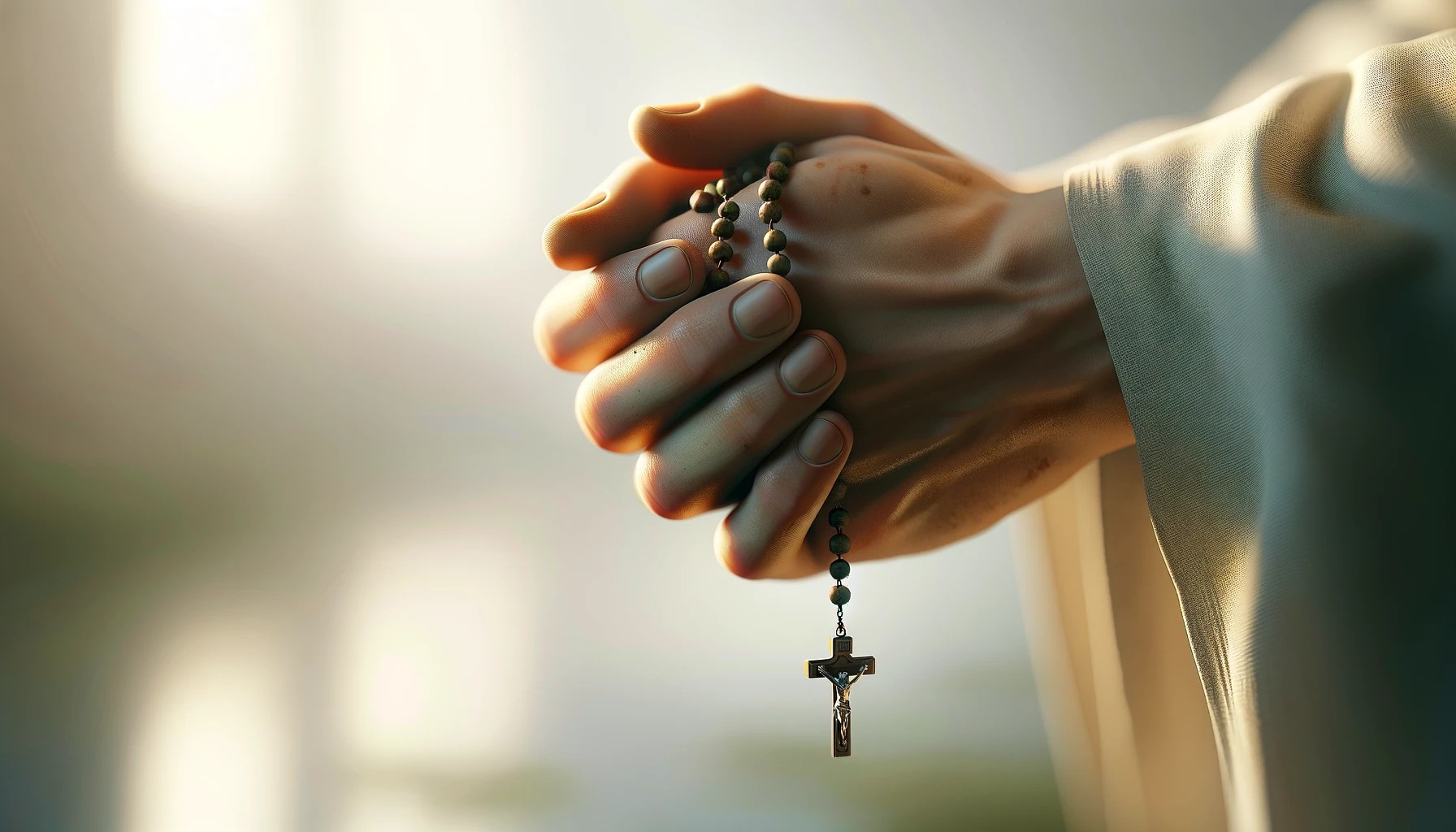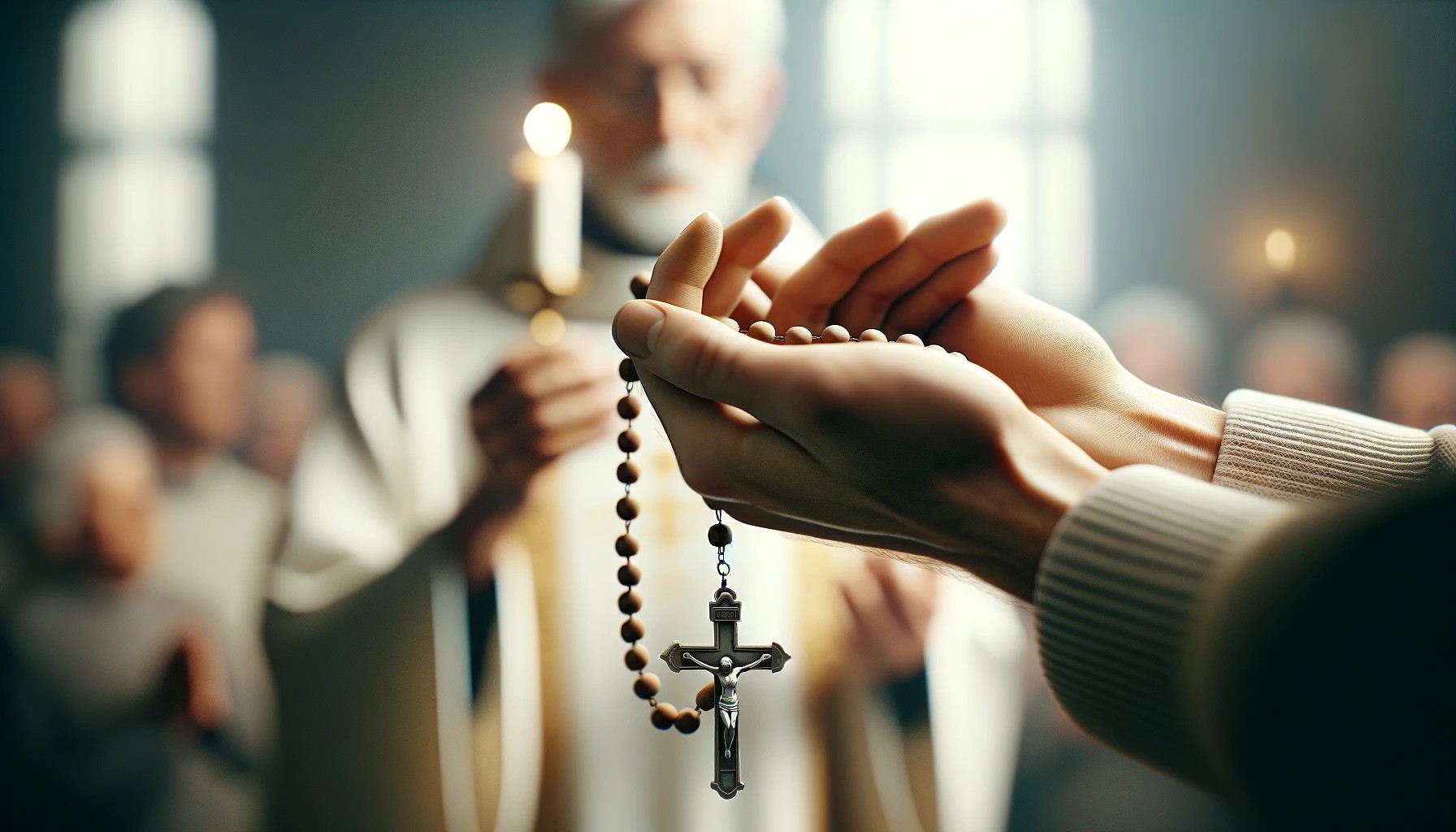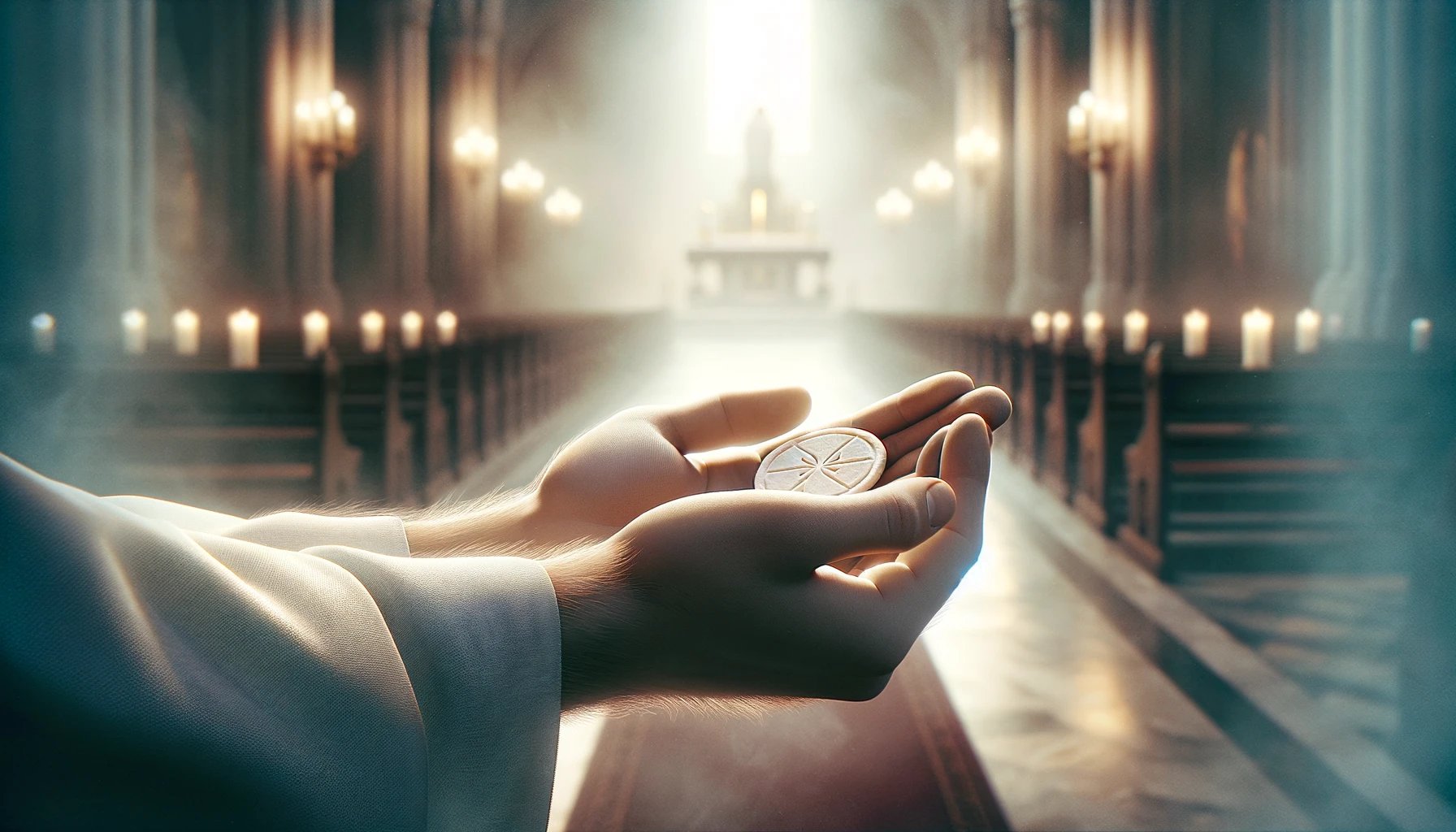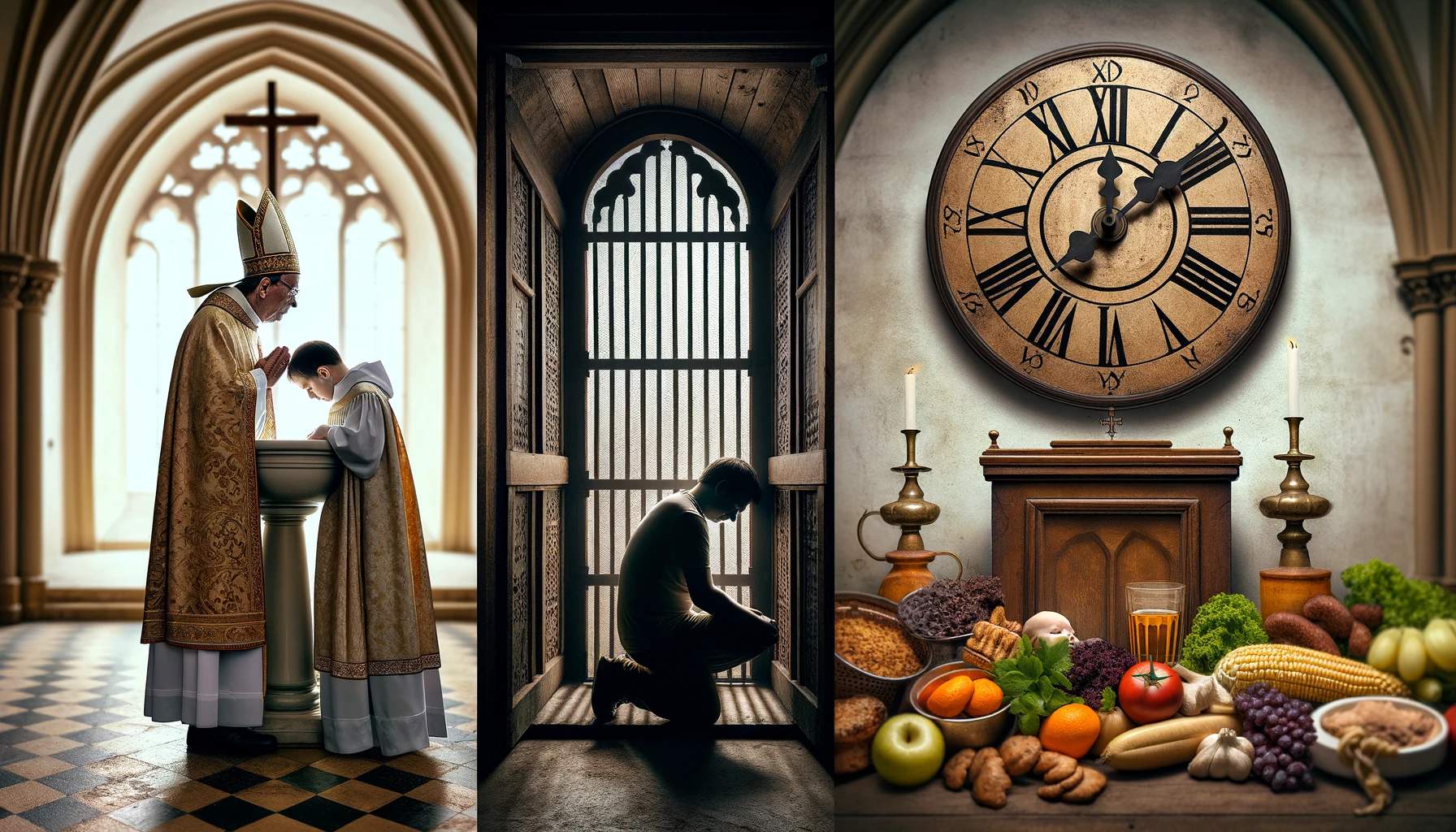Home>Theology and Spirituality>Should You Kneel When Receiving Communion


Theology and Spirituality
Should You Kneel When Receiving Communion
Published: February 24, 2024
Ericka Andersen, an editor at Christian.net, expertly merges digital strategy with content creation, focusing on faith and societal issues. Her communication skills enhance the platform's engaging narratives, fostering meaningful dialogue on belief's impact on society.
Discover the significance of kneeling during communion and its theological and spiritual implications. Explore whether you should kneel when receiving communion. Gain insights into theology and spirituality.
(Many of the links in this article redirect to a specific reviewed product. Your purchase of these products through affiliate links helps to generate commission for Christian.net, at no extra cost. Learn more)
Table of Contents
Introduction
Kneeling during communion is a practice deeply rooted in religious traditions, and it has sparked discussions and debates within various Christian denominations. The act of kneeling, a physical gesture of reverence and humility, holds significant symbolism in the context of receiving the Eucharist. This ritual has been a subject of contemplation for many individuals, prompting them to ponder the significance of this posture during such a sacred moment.
The act of kneeling during communion is not merely a physical gesture; it embodies a profound spiritual and theological significance that has been a focal point of theological discourse for centuries. As we delve into the history, theological implications, and contemporary perspectives surrounding this practice, it becomes evident that the decision to kneel or not during communion is not a simple matter, but one that encompasses a rich tapestry of theological, cultural, and personal considerations.
Read more: Kneeling When Receiving Communion
The History of Kneeling During Communion
The act of kneeling during communion has a rich historical foundation that dates back to the early centuries of Christianity. In the early Church, kneeling was not a common posture for prayer or worship. Instead, standing was the customary posture for prayer and reverence. However, as the theological understanding of the Eucharist developed, the act of kneeling during communion gradually emerged as a symbol of profound reverence and humility.
The practice of kneeling during communion became more prevalent in the Western Church during the medieval period. This shift in posture was influenced by the growing emphasis on the real presence of Christ in the Eucharist, as articulated in the doctrine of transubstantiation. Kneeling was seen as a fitting posture to express adoration and reverence for the sacred elements of the Eucharist, believed to be transformed into the body and blood of Christ.
The Council of Trent, convened in the 16th century, played a pivotal role in solidifying the practice of kneeling during communion in the Roman Catholic Church. The council decreed that "the faithful should communicate kneeling," further cementing the significance of this posture during the reception of the Eucharist.
In the Eastern Orthodox tradition, the practice of standing during the reception of communion has been preserved since ancient times. This standing posture is deeply rooted in the Eastern Church's theological and liturgical heritage, reflecting a different theological emphasis compared to the Western tradition.
The historical evolution of the practice of kneeling during communion reflects the intricate interplay between theological developments, cultural influences, and liturgical practices within different Christian traditions. This historical backdrop provides valuable insights into the diverse perspectives and theological nuances surrounding the act of kneeling during the reception of the Eucharist.
Arguments for Kneeling
Kneeling during communion is supported by a myriad of theological, spiritual, and symbolic arguments that underscore its profound significance within the context of the Eucharistic celebration. These arguments, deeply rooted in Christian tradition and doctrine, provide compelling reasons for the practice of kneeling during the reception of the Eucharist.
-
Reverence and Adoration: Kneeling is regarded as a physical expression of reverence and adoration towards the real presence of Christ in the Eucharist. The act of kneeling signifies a humble acknowledgment of the sacred mystery of the Eucharist and the profound belief in the presence of Christ's body and blood in the consecrated elements.
-
Physical Posture Reflecting Spiritual Disposition: The act of kneeling is seen as a tangible embodiment of an individual's inner disposition of humility, contrition, and awe in the presence of the divine. It serves as a visible manifestation of the worshipper's spiritual state, conveying a deep sense of respect and submission before the transcendent reality of the Eucharist.
-
Historical and Liturgical Continuity: Kneeling during communion maintains a sense of historical and liturgical continuity with the early Christian tradition and the practices of the Church throughout the centuries. It serves as a link to the rich tapestry of Christian worship and underscores the enduring significance of this posture in the celebration of the Eucharist.
-
Unity and Uniformity in Worship: The practice of kneeling fosters a sense of unity and uniformity in worship within a faith community. By engaging in a common posture of kneeling during the reception of communion, worshippers participate in a collective expression of reverence and devotion, reinforcing the communal nature of the Eucharistic celebration.
-
Sacramental Theology: From a sacramental perspective, kneeling during communion aligns with the theological understanding of the Eucharist as a sacred and transformative encounter with the living Christ. The act of kneeling underscores the belief in the real presence of Christ in the Eucharist and accentuates the sacramental nature of the ritual.
-
Cultural and Symbolic Significance: In many cultural contexts, kneeling holds deep symbolic significance, representing acts of homage, submission, and honor. Embracing this posture during communion resonates with cultural traditions that associate kneeling with profound acts of respect and veneration, enriching the spiritual and communal dimensions of the Eucharistic celebration.
The multifaceted arguments in favor of kneeling during communion reflect the depth of theological reflection, spiritual devotion, and communal significance associated with this practice. These compelling reasons contribute to the ongoing dialogue and discernment within Christian communities regarding the appropriateness and meaning of kneeling during the reception of the Eucharist.
Arguments Against Kneeling
The practice of kneeling during communion, while deeply ingrained in many Christian traditions, has also been met with thoughtful considerations and reservations within certain theological and cultural contexts. These considerations have given rise to compelling arguments against the practice of kneeling during the reception of the Eucharist, reflecting diverse perspectives and theological insights within the Christian faith.
-
Equality and Inclusivity: Some proponents of standing during communion emphasize the importance of fostering an inclusive worship environment. They argue that kneeling may inadvertently create a sense of exclusion for individuals who are physically unable to kneel due to age, physical limitations, or health conditions. Standing, in contrast, is viewed as a posture that accommodates a broader spectrum of worshippers, promoting a sense of equality and inclusivity within the faith community.
-
Cultural Sensitivity and Diversity: In certain cultural contexts, kneeling may carry cultural connotations that differ from its intended theological symbolism. For example, in some cultures, kneeling may be associated with acts of servitude or submission rather than reverence and adoration. As a result, some individuals and communities advocate for alternative postures, such as standing, to ensure that the act of worship remains culturally sensitive and resonant with diverse cultural expressions of reverence and devotion.
-
Theological Emphasis on Resurrection: Within theological discourse, the emphasis on the resurrection and the victorious Christ has prompted theological reflections on the appropriateness of kneeling during communion. Some theological perspectives underscore the significance of standing as a posture that symbolizes the resurrected Christ and the hope of new life. Standing is seen as a fitting expression of the believer's participation in the victory of Christ over sin and death, aligning with the theological emphasis on resurrection and new life in Christ.
-
Scriptural and Historical Precedents: Advocates for standing during communion often point to scriptural and historical precedents that highlight standing as a posture of reverence and worship. They draw attention to biblical accounts and early Christian practices that depict standing as a customary posture for prayer and worship, suggesting that standing during communion aligns with these foundational precedents and reflects a continuity with early Christian traditions.
-
Personal Piety and Devotional Postures: Some individuals express a preference for standing during communion as a deeply personal expression of piety and devotion. They view standing as a posture that allows for a more active and engaged participation in the Eucharistic celebration, enabling them to fully embody their spiritual disposition and devotion to Christ without the physical constraints associated with kneeling.
These nuanced arguments against kneeling during communion reflect the depth of theological discernment, cultural sensitivity, and personal piety within Christian worship. They contribute to the ongoing dialogue and reflection on the diverse postures and gestures that shape the communal and individual experience of the Eucharistic celebration.
Cultural and Regional Differences
Cultural and regional differences play a significant role in shaping the diverse practices and postures observed during the reception of communion within Christian communities. The rich tapestry of cultural expressions, historical influences, and regional traditions has contributed to a spectrum of postures, including kneeling, standing, and other variations, each reflecting the unique cultural and theological ethos of the respective traditions.
In many Western contexts, the practice of kneeling during communion has been deeply ingrained in the liturgical and devotional life of Christian communities. This tradition is closely intertwined with the historical development of the Western Church and its theological emphasis on the real presence of Christ in the Eucharist. The act of kneeling is often regarded as a solemn and reverent gesture, symbolizing adoration and humility in the presence of the sacred elements. This cultural disposition towards kneeling has permeated the worship practices of Western Christian traditions, shaping the communal expression of reverence during the Eucharistic celebration.
Conversely, in Eastern Christian traditions, standing during the reception of communion has been preserved as a distinctive cultural and theological expression. The emphasis on standing reflects the theological nuances and liturgical heritage of the Eastern Church, underscoring a different theological emphasis compared to its Western counterparts. Standing is often associated with a posture of readiness, vigilance, and participation in the eschatological banquet, embodying the theological themes of resurrection and the anticipation of the coming Kingdom.
Furthermore, within the global landscape of Christianity, cultural diversity has given rise to a myriad of postures and gestures during communion. In some cultural contexts, prostration, a profound gesture of humility and submission, is observed during the reception of the Eucharist, reflecting unique cultural expressions of reverence and devotion. These cultural variations underscore the dynamic interplay between faith, tradition, and cultural identity, enriching the communal worship experience with a tapestry of diverse postures and gestures that resonate with the cultural ethos of the worshippers.
The influence of cultural and regional differences on the practice of kneeling, standing, or other postures during communion highlights the dynamic and multifaceted nature of Christian worship. These variations serve as a testament to the rich diversity and cultural resonance within the global Christian community, reflecting the intricate interweaving of faith, tradition, and cultural heritage in the expression of reverence and devotion during the Eucharistic celebration.
Read more: When Should Catholics Kneel After Communion
Personal Choice and Respectful Participation
Amidst the theological, historical, and cultural considerations surrounding the practice of kneeling during communion, the element of personal choice and respectful participation emerges as a pivotal aspect of the discourse. The decision to kneel or adopt an alternative posture during the reception of the Eucharist is deeply intertwined with individual convictions, spiritual discernment, and the ethos of communal worship. This dimension of personal agency and respectful engagement underscores the diverse ways in which worshippers navigate their participation in the sacred ritual of communion.
At the heart of personal choice in posture during communion lies a profound sense of spiritual discernment and autonomy. Individuals approach the question of kneeling with a spectrum of personal convictions, shaped by their theological understanding, spiritual experiences, and cultural influences. For some, the act of kneeling embodies a deeply cherished tradition, symbolizing a profound connection to the sacred mysteries of the Eucharist and a tangible expression of reverence and adoration. Others may resonate with alternative postures, such as standing, viewing it as a meaningful embodiment of their spiritual disposition and theological convictions. This diversity of personal perspectives reflects the rich tapestry of individual spiritual journeys and the nuanced ways in which worshippers navigate their engagement with the Eucharistic celebration.
Respectful participation in the communal act of receiving communion encompasses a spirit of understanding, inclusivity, and mutual respect within the faith community. It entails a recognition of the diverse postures and gestures adopted by fellow worshippers, each reflective of unique theological, cultural, and personal considerations. Embracing a spirit of respect and understanding allows for a harmonious coexistence of varied postures, fostering an environment where individuals feel affirmed in their chosen mode of participation while honoring the choices of others. This ethos of respectful participation nurtures a sense of unity amidst diversity, affirming the inherent value of individual agency and communal worship within the context of the Eucharistic celebration.
The interplay of personal choice and respectful participation underscores the dynamic and inclusive nature of Christian worship, embracing the diverse expressions of reverence and devotion manifested through varied postures during communion. This dimension invites worshippers to engage in thoughtful discernment, mutual respect, and a spirit of unity that transcends the diversity of individual practices, enriching the communal experience of the Eucharistic celebration with a tapestry of personal convictions and communal harmony.
Conclusion
The practice of kneeling during communion encapsulates a profound tapestry of theological, historical, cultural, and personal considerations within the Christian faith. It is a practice deeply rooted in tradition, theological reflection, and cultural expressions, reflecting the diverse ways in which worshippers engage with the sacred ritual of the Eucharistic celebration.
The historical evolution of kneeling during communion, from its early emergence to its codification in certain Christian traditions, underscores the enduring significance of this posture within the context of the Eucharist. The theological and spiritual arguments both for and against kneeling offer compelling insights into the multifaceted nature of this practice, reflecting the depth of theological reflection and spiritual devotion that underpins the act of kneeling during communion.
Cultural and regional differences further enrich the discourse surrounding kneeling, highlighting the dynamic interplay between faith, tradition, and cultural identity within the global Christian community. These variations serve as a testament to the rich diversity and cultural resonance within Christian worship, reflecting the intricate interweaving of faith, tradition, and cultural heritage in the expression of reverence and devotion during the Eucharistic celebration.
Amidst these diverse perspectives and considerations, the element of personal choice and respectful participation emerges as a pivotal aspect of the discourse on kneeling during communion. The freedom to discern and embrace one's preferred posture, coupled with a spirit of understanding and inclusivity within the faith community, fosters an environment where diverse expressions of reverence and devotion coexist harmoniously, enriching the communal experience of the Eucharistic celebration.
In essence, the question of whether to kneel during communion transcends a mere physical posture; it embodies a profound reflection of theological convictions, cultural expressions, and personal spirituality. The ongoing dialogue and discernment surrounding this practice underscore the dynamic and inclusive nature of Christian worship, embracing the diverse expressions of reverence and devotion manifested through varied postures during communion. Ultimately, the act of kneeling, or choosing an alternative posture, serves as a tangible expression of the worshipper's reverence, adoration, and spiritual disposition in the presence of the sacred mysteries of the Eucharist.














